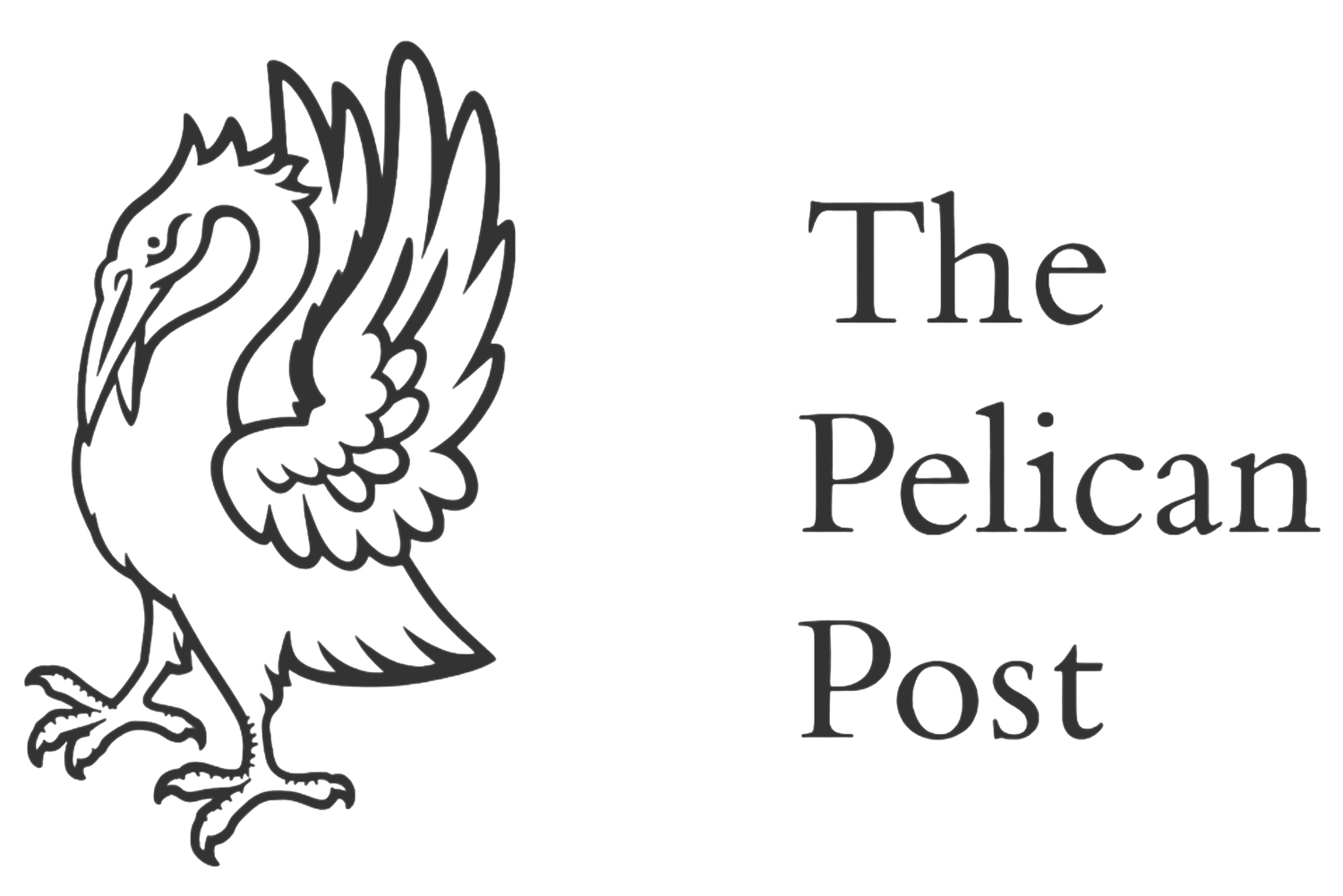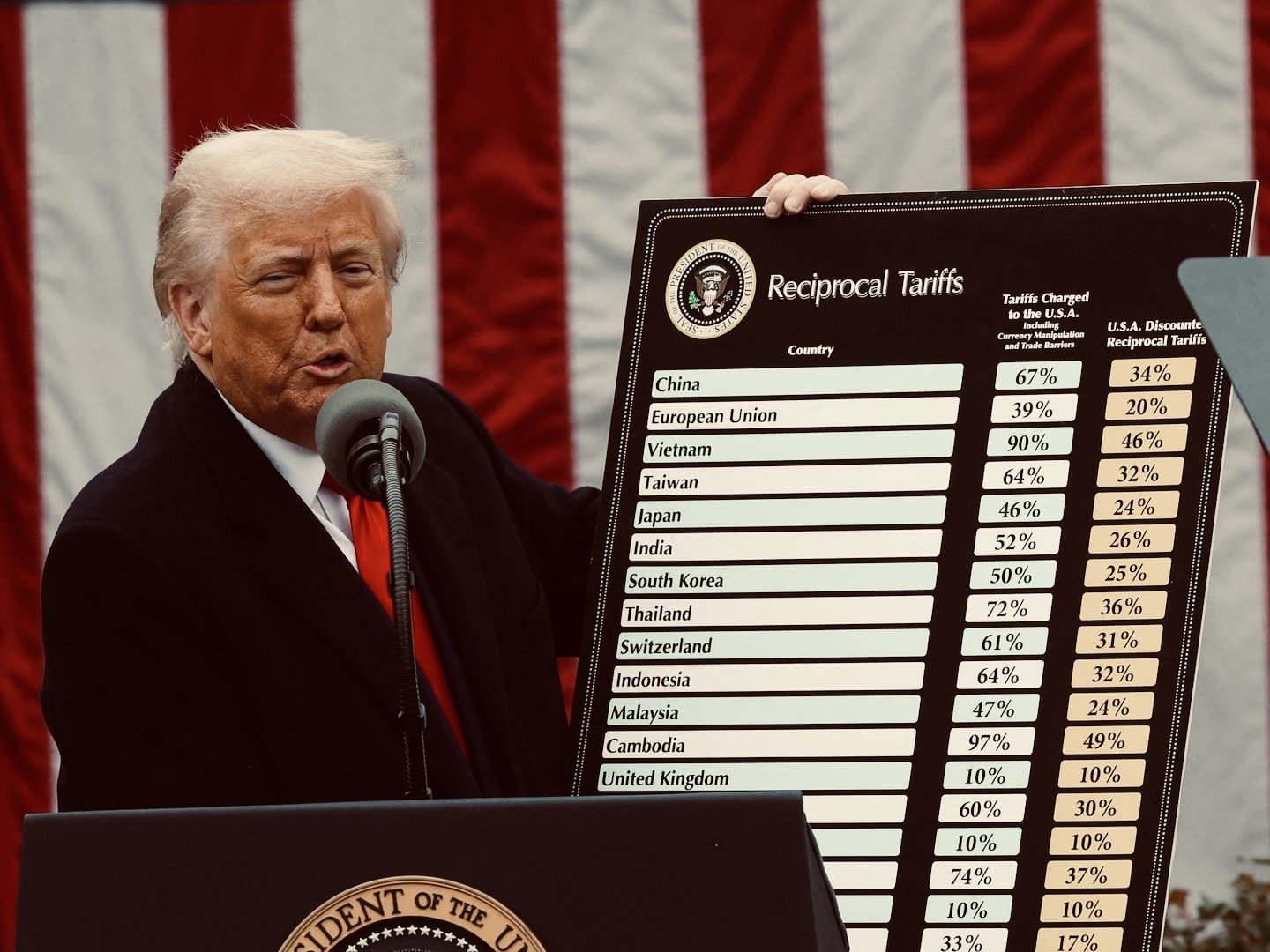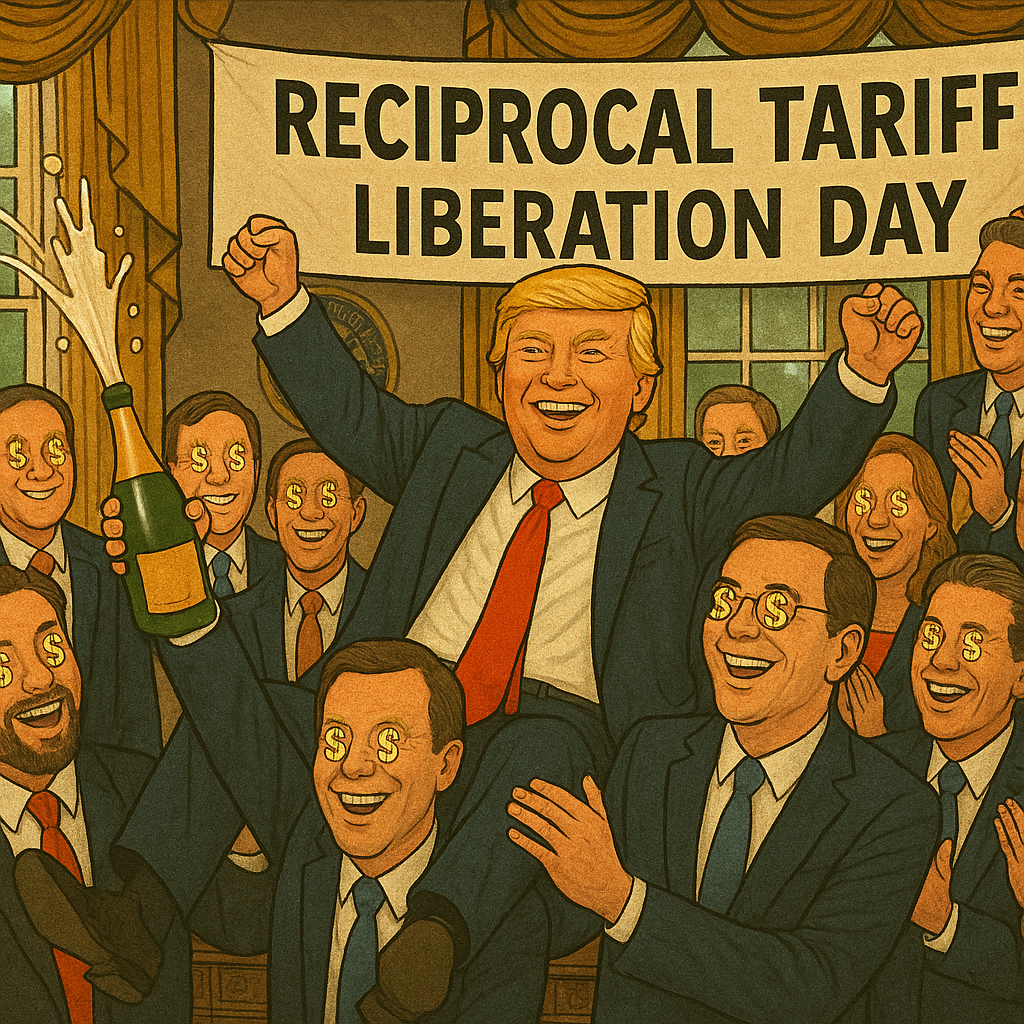Trumps’ tariffs: a guide to the new world order
A deep dive into the minds behind trumps latest actions
From the perspective of Trump’s top economic advisors — Scott Bessent and Stephen Miran — the political and economic status quo exposes the US to security vulnerabilities.
The political and economic state of the world needs no introduction. Since President Trump’s proclaimed ‘Liberation Day’ on April 2nd, the ongoing global trade war has rampaged across the international economy, devastated the stock market and has pushed the US (and the global) economy towards recession.
Let me be clear: it is impossible to predict the President’s true intentions. After all, it seems that Mr Trump is living in his own bubble, claiming on ‘Liberation Day’ that “for decades [America] has been looted, pillaged, raped and plundered” by foreign nations “friend-and-foe alike”. As if the most dominant economy in human history – envied by “both friend-and-foe” – has been the victim of its own architecture. As if to prove my point, the president backtracked, dishing out exceptions and adding a 90-day tariff pause.
However, through the unique lens of Trump’s top two economic advisors – Secretary of the Treasury Scott Bessent and Chair of Economic Advisors Stephen Miran – the US bears glaring faults in its current economic trajectory, presenting an alarming threat to future American security. Behind the initial ‘shock and awe’ of Trump’s sweeping tariffs lies an intricate but delicate plan, heralding a new world order that will revolutionise global politics as we know it.
The ‘End of History’ – coined by Francis Fukuyama in 1992 – theorised that society had reached the pinnacle of ideological evolution. With liberal democracies prevailing over authoritarian governments, especially concerning the dissolution of Soviet Communism and China’s turn towards the West, the clash between political principles seemed to be coming to an end, cementing the security of ‘Western democracies’.
However, Fukuyama was wrong. The ‘End of History’ was reversed. The globalised world, ushered in by Reagan’s neoliberal world order, has given rise to America’s biggest rival – China. Indeed, Fukuyama’s vision of an Asia free from authoritarianism was nullified – as Scott Bessent argues, China’s openness to foreign markets (and the wealth with it) only consolidated the power of the Chinese Communist Party (CCP). Simultaneously, the unimaginable wealth and power garnered by neoliberalism was overshadowed by the US’ crumbling industrial backbone. Deindustrialisation in the US has been severe: manufacturing contributed $2.3 trillion or 10.7% to the US’ GDP, a far cry from 27-28% during the 1950s. Manufacturing employment fell from 19 million in 1979 to just over 12 million in 2023, conceiving the infamous ‘Rust Belt’ that stretched across much of Northern USA. As supply chains stretched globally, it fostered a dependence on foreign manufacturing across a range of goods, partially exacerbating the US’ trade deficit. This reliance is the precise vulnerability that both Bessent and Miran argue to be a grave threat to US security and global sovereignty.
In a world where the ‘End of History’ is reversed, the likelihood of a conflict between increasingly authoritarian and hostile China is escalated. Historically, rapid militarisation is mostly driven by its civilian industrial capacity. In this regard, China has the cards. Bessent thus fears that the US would immediately reel at its deindustrialised vulnerabilities in a hypothetical war, rendering the perks of globalisation to be temporary.
Miran, Bessent and by extension, Trump himself, thus propose a new world order that ascends the US to the apex of large-scale, high-tech manufacturing. A revolutionary political ecosystem akin to America’s industrial dominance under the Bretton Woods economic order during the 1950s is to be born. Nonetheless, Trump and his advisors’ discontent with the status quo extends beyond the whining of “unfairness” and “cheating” in trade. Rather, Miran sees the US’ unique position as the hegemon as detrimental to its self-interests. Tariffs, I suppose, are merely the fulcrum to move the world.
But we need context for the current administration’s grievances against of the world.
Trump’s Discontent – Bretton Woods, Neoliberalism & the Triffin World
In 1944, the US and 44 allies signed the Bretton Woods agreement – a Keynesian controlled economic approach installing the US dollar as the world’s reserve currency. In addition to this, all other currencies in the pact would be held at a fixed peg to the dollar’s value and the dollar itself be pegged to the value of Gold. The Bretton Woods aligned to the US’ historical object of containment with the Marshall Plan the Truman Doctrine – cultivating allies and enabling them to regrow from the ashes of WWII.
However, wielding the reserve currency comes at a cost. By being the global reserve currency, dollar supply must continually increase to meet the growing global liquidity demands for foreign exchange (FX) reserves. Inevitably, the US would be entrenched in persistent trade deficits, continuously exchanging dollars for foreign goods as foreign economies buy up more dollars to fill FX reserves. This predicament formed the Triffin Dilemma – the US’ future economic sustainability and security as a creditor and reserve currency holder was increasingly at risk. If trade deficits compound and debt-to-GDP ratio begins to rise, the dollar and the gold standard loses it credibility, threatening rises in interest rates or treasury dumps. As the supply of dollars rapidly outpaced the supply of gold to fuel the accelerating world economy – the dollar was overvalued relative to gold and could no longer receive backing from it. Thus came the ‘Nixon Shock’ in 1971 that ended Bretton Woods, severing the tie between the dollar and gold.
The ensuing neoliberal era, though successfully consolidated the power of the US as the dominant world power, laid the foundations of the Trump administration’s discontent with the status quo. Neoliberalism and the current epoch of free trade gave free access to the US markets, stimulating global economic booms in Japan and much of Asia. The efficiency, productivity and technological advancements in foreign manufacturing attracted US transnational investment and job outsourcing, exacerbating the US’ industrial decline. Critically, the Triffin Paradox had not withered away since the Nixon Shock. In fact, it had been amplified. By the late 20th century, world economic growth was outpacing the US; America’s share of world GDP fell from 60% in 1960 to around 26% today. Despite this, the US still maintained its role as the supplier of the reserve currency, intensifying the dollar’s structural overvaluation to finance the growing world economy. Consequently, America deepened its current account deficits. To make things worse, under neoliberalism, trade surplus countries began exploiting currency manipulation by buying and hoarding dollars in their reserves to devalue their own currencies. This, combined with capital inflows into the US, strengthened the dollar and eroded American export competitiveness.
As globalised economic growth surpasses that of the American economy, the strain of being a reserve currency holder slowly outweighs its geopolitical and financial benefits. America’s weakened exports and industrial decline leaves gaps in US security, paradoxically, due to itself.
The Solution
Given the root of the Trump administration’s discontent with the status quo, he wants change. But remember, in this theorised post free-trade world order, Trump wants it all. First, he believes it is vital for the US to reindustrialise, patching security vulnerabilities. Secondly, Trump wants to keep the dollar as the reserve currency to maintain American soft power – especially financial extraterritoriality, the US’ ability to sanction and cripple countries at minimal cost. Achieving both simultaneously is an oxymoron –reserve status means an overvalued currency that forces persistent trade deficits, whereas export competitiveness needs the opposite –but tariffs offer a “narrow” path back to a Bretton Woods-style epoch.
Inspired by Trump’s ‘The Art of the Deal’, both advisors see tariffs as extensions to US soft power, giving negotiating leverage. Equally, Miran argues that reciprocal tariffs level the playing field in trade by neutralising non-tariff barriers and currency manipulation. He further suggests it will have noninflationary impacts, though many economists heavily dispute this. Tariffs are a double-edged sword in their eyes. If currency offset occurs (as it did in Trump’s 2018-19 trade war) and tariffs are a noninflationary tool, tax revenue can be invested into US industries or be used to fund tax cuts. If inflation occurs, depending on the elasticity of importing foreign goods, it will stimulate a reorganisation of supply chains or incentivise investment in America – either way, it improves industry.
In Stephen Miran’s paper A User’s Guide to Restructuring the Global Trading System, he proposed multilateral currency changes to maintain the value of the dollar and its status as a reserve currency. In his fantastical “Mar-a-Lago accord”, thanks to Trump’s beautiful deals, Miran outlines that US partners would be obliged to strengthen their respective currencies if the dollar were to be overvalued. Partnering states who sell dollars thus depreciate it relative to other currencies. This would offset the competitive disadvantage of the US in its exports and cultivate global manufacturing demand.
To counter reserve hoarding and currency manipulation, Miran suggests imposing a fee on any country using the dollar or holding US Treasuries. A ‘user fee’ as such allows US to withhold interest payments to disincentivize export-dominated countries to accumulate dollars at scale, again preventing its appreciation. Security zones guaranteed by the US are to be segregated based on the status of international partnerships. Protected partners will nonetheless have to incur an increased burden of global security, saving the US budgeting headroom.
The principle of tariffs is that it will hurt foreign economies more, generating sufficient negotiating leverage for Trump to sign a “Mar-a-Lago accord” to peg foreign currencies to the dollar. Hence, Trump hopes to revitalize the US’ industrial dominance and conceive a special form of global reign mirroring that of the 1950s, the glory days in the eyes of the elderly president.
An Unnatural World
No matter how convinced you are of the White House’s (astonishingly) detailed plan for world reform, critical strategic mistakes under the administration have the potential to jeopardise this entirely.
Economic and political pacts that enable a superpower to influence the affairs of its partnered states demands immense trust – a trust that is eroded daily. The Trump administration’s erratic and hostile foreign policy, aggravating its own allies by proclaiming Canada as the “51st state” and seemingly serious demands to buy Greenland, crumbles global perceptions of the US. The unpredictable nature of the Trump administration further perpetuates fears regarding European and world security. Conversely, the original Bretton Woods economic order came into fruition in the midst of WWII, where Europe was plagued by the blight of Nazism and feared the onslaught of Communism. Indeed, at the end of WWII, the US seemed to be only reliable superpower that guaranteed freedoms and provided a Liberal Democracy necessary to facilitate the rebuilding of Europe. That same desperation and trust is absent today.
Addressing the elephant in the room – the tariffs themselves. Trump’s global trade war is a strategic mistake. Sweeping tariffs on this scale and chaos was unanticipated, a universal 10% tariff was issued following a staggering 145% duty rate on China. Instead of a careful and tactical rises in tariffs (1-2 per cent per month recommended by Miran) to reduce trade deficits or pressure foreign states into cooperation, the opposite had occurred. Retaliatory tariffs from both allies, rivals and neutral states took place – the EU threatening a 20% tariff and China hitting back with 125% sweeping duties. Widespread distrust and alienation from US allies may foil his plans for a potential “Mar-a-Lago” economic accord to be accepted.
Furthermore, the Trumponomic tenet that a 1950s-60s economic order was and should be the default of the developed world is a lie. It is true that Europe depended on US manufacturing, America producing more than 60% of the world’s industrial output by the end of the 1940s, yet this relationship was artificial and circumstantial. Europe’s industrial capacity collapsed during the Second World War, taking decades for Europe to even return to its pre-war state. Surely revitalised modern European manufacturing would be decoupled from American reliance. And with the US’ pivotal role in the world economy as outlined earlier, a trade surplus with America was almost inevitable.
Even disregarding the mistakes, the Oval Office’s drawing board still depicts an unnatural world order – one of subservience and feudalism. The success story of free-trade and neoliberal philosophy hinged on individualism: individual countries were given a chance to succeed in the international market, gaining wealth and sovereignty as long as they obliged to the rules of the World Trade Organisation. In this new proposed world order, states must sacrifice much of their economic and political sovereignty to enjoy thebenefits of dodging tariffs, rendering this an unattractive deal. Partnering countries in a hypothetical “Mar-a-Lago accord” would be reduced to mere vassal or satellite states in the economic sense, currencies being pegged to the dollar itself. Given the emanating distrust and perceptions of incompetency of the US government, US allies will be increasingly wary of joining a political order where individual economic prosperity comes secondary to America’s. Indeed, Trump’s immature behaviour – seeking all the benefits of hegemony without paying its hefty price – is on display.
But much is uncertain in this world. Could this theorised plan be a last-ditch effort for Trump to secure the longevity of US political and economic hegemony? What if his treaty fails? Would the US be isolated? Unlikely. But would Trump be forced to concede and revert back to the status quo? We’ll have to wait.



